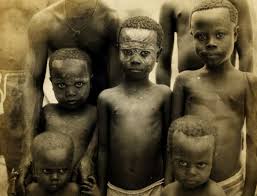Onge Tribe:

Andaman’s Onge tribe king Totoko and queen Priya welcomed a baby boy recently, bringing the tribe’s total population to 136.
- Onge Tribe are one of the most primitive tribes in India that belong to the Negrito racial ancestry.
- They are inhabiting Little Andaman Island, the most southerly island in the Andaman archipelago.
- They are a semi-nomadic group and are dependent on the ocean and the forest for sustenance.
- Unlike other religions, they do not believe in or follow firm worshipping practices or sacrifices.
- The colour of the teeth has a unique interpretation among Onges, who consider the pearly white teeth a symbol of death.
- They continue to chew the bark to impart a red colour to their teeth.
- They decorate their bodies and their faces with white and ochre clay. On special occasions, they place a greater emphasis on body ornamentation.
- Until the 1940s, the Onge were the sole permanent inhabitants of Goubalambabey (the Onge name for Little Andaman).
- They now share the 732 sq km island with around 17,000 settlers from India, Bangladesh, and the Nicobar Islands.
- The Onge population was also decimated following contact with British colonists and Indian settlers; it fell from 670 in 1900 to only 96 members by the early 2000s.
- In 1976, the Onge were settled in order to have ‘the basic facilities for hygienic living and protection against elements of nature’.
- They now live in a reserve in Dugong Creek (Little Andaman) that is a fraction of the size of their original territory.
- The Onge tribe is also one of the world’s least prolific and infertile communities. Infertility affects somewhat more than 40% of married couples.




